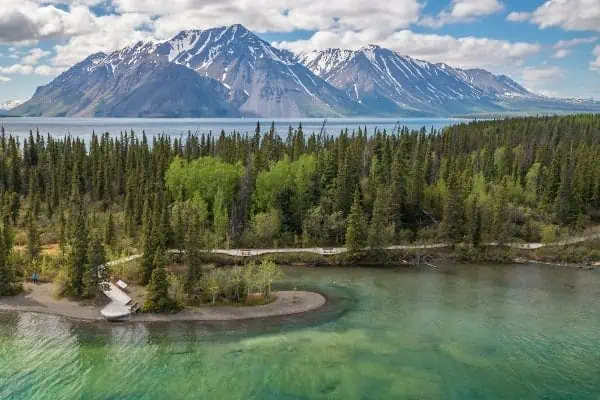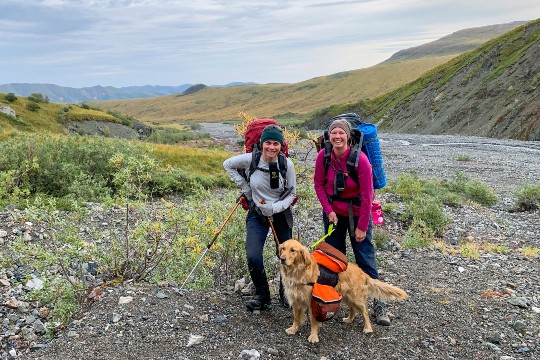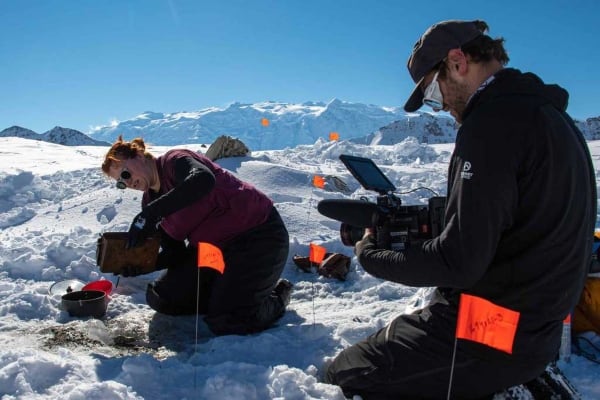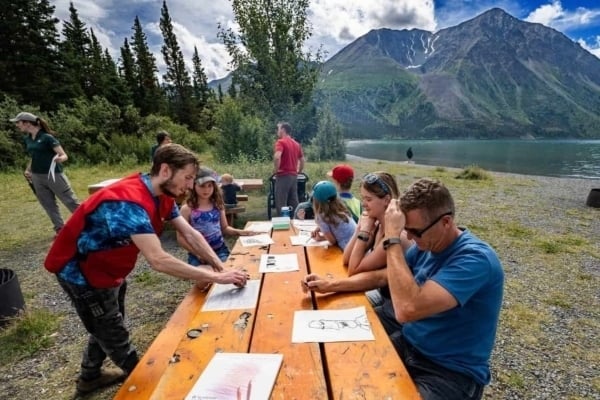The late afternoon sun gives a warm, vibrant glow to the alpine meadow and cerulean sky. Your daypack feels weightless as you hike the return route to your backcountry camp. The wind is just right for keeping mosquitoes at bay. That bag of dehydrated beans and rice becomes a feast in your mind’s eye. And then, there it is, a roiling torrent of water in place of the babbling brook you crossed in the morning. That weightless daypack suddenly feels inadequate now that you’re separated from your tent and other supplies.
Many backcountry adventures in Kluane National Park and Reserve involve creek crossings. Water levels can change dramatically throughout the summer and even over the course of the day.
During the day, glacial melt caused by warming temperatures can increase the volume of rivers and streams. Rainfall can affect stream volume and velocity at any time of day, making crossings unpredictable and susceptible to rapid change.
With some knowledge and preplanning, you can make the best of a potentially soggy or dangerous situation when it comes to creek crossings.
Ultimately, if a stream crossing appears to be very difficult and risky, don’t attempt to cross. Pack enough clothes and food, even for day trips, that will allow you to wait a few hours, or even overnight, if high water leaves you stranded.
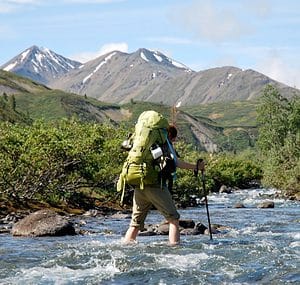
When deciding to cross, here are some things to keep in mind.
- Consider your location, the conditions and time of day:
- Try to cross streams early in the day when water levels are often lowest.
- Look for a wide, shallow point to cross that is not above rapids or other hazards like waterfalls or deep pools.
- Braided areas tend to be more shallow than single channels.
- Flatter areas tend to have slower-moving water than steeper areas.
- Riverbanks may be unstable and could collapse.
- Cloudy water can obscure rolling rocks and unstable footing.
- Consider your gear:
- Always undo the waist and chest straps of your pack for easy removal in case you fall.
- Don’t cross barefoot; use boots, running shoes or, better yet, neoprene boots that protect your feet from cuts and cold water.
- Use a sturdy stick or trekking poles for support and for testing water depth.
- Consider your technique:
- Face upstream while crossing, move with the current, and use your stick or trekking pole to keep your balance.
- Use group crossing techniques; for example, have the leader positioned upstream with group members in single file behind for support and to take advantage of the group’s downstream eddy.
- Think about the abilities of your group members, and ensure everyone knows the plan and is comfortable with the crossing.
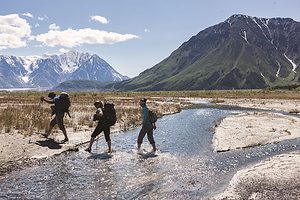
When planning your outdoor adventure, find out if creek crossings will be part of the trip, educate yourself on best practices, and even try out some techniques in a low-risk environment before you leave. Visitor Centre staff in Kluane National Park and Reserve have current information on park trail conditions and can discuss creek crossings with you.
To learn more about river safety, consider taking a swiftwater safety course. For more information on general backcountry safety, visit adventuresmart.ca and download the AdventureSmart app for a convenient way to log your trip plan.
Know before you go and adventure wisely!

